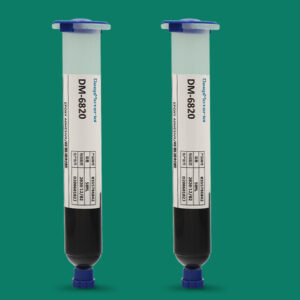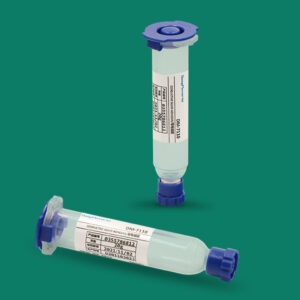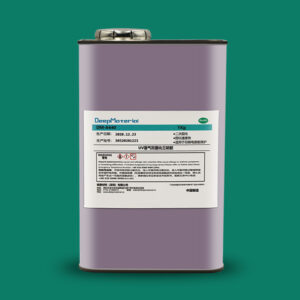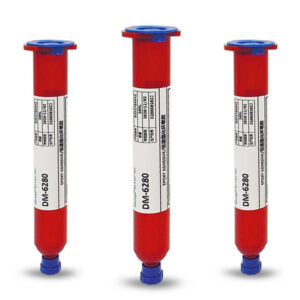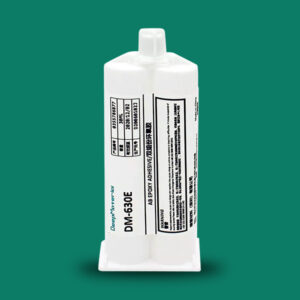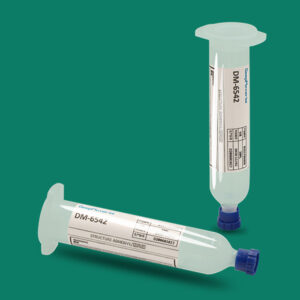The Essential Guide to Automatic Fire Suppression Systems for Vehicles
The Essential Guide to Automatic Fire Suppression Systems for Vehicles
Fire risks in vehicles are often underestimated, but they represent a serious hazard, particularly for commercial vehicles, electric vehicles (EVs), buses, and heavy-duty machinery. A fire outbreak in any vehicle can cause severe damage, injury, and even fatalities, especially when it involves flammable fuel, high-capacity batteries, or hazardous materials. In response to these risks, automatic fire suppression systems (AFSS) are increasingly becoming a critical safety feature in modern vehicles. These systems are designed to detect and suppress fires before they can cause catastrophic damage.
In this blog post, we will explore the importance of automatic fire suppression systems for vehicles, how they work, their benefits, and the types of vehicles that can significantly benefit from such systems. By the end, you’ll understand why installing these systems should be a priority for both safety-conscious drivers and fleet operators.
Why Are Vehicles Prone to Fires?
Vehicles are complex machines, and their combination of heat, fuel, and electrical systems makes them susceptible to fires. Whether it’s a fuel-powered car, an electric vehicle, or a commercial truck, the fire risk should never be underestimated. Here are the primary reasons why vehicles catch fire:
Engine Malfunctions
- Vehicles rely on intricate engine systems, which can overheat or malfunction. Engine failures can lead to sparks, oil leaks, or excessive heat, triggering fires.
Fuel Leaks
- Fuel systems, especially in older vehicles, may develop leaks. A spark or heat source can easily ignite leaking fuel, causing a fast-spreading fire.
Electrical Failures
- Modern vehicles, particularly electric vehicles (EVs), feature complex electrical systems. Faulty wiring, short circuits, or damaged electrical components can lead to electrical fires, often in hard-to-reach areas like the engine compartment or beneath the vehicle.
Battery Issues in Electric Vehicles
- Due to their high-capacity lithium-ion batteries, EVs are at heightened risk. If a battery is damaged or short-circuits, it can lead to thermal runaway, a dangerous condition in which the battery overheats and causes a fire.
Collisions and Accidents
- Accidents and collisions can damage a vehicle’s fuel system, battery, or electrical wiring, quickly leading to a fire. These fires often spread rapidly due to the high temperatures generated by the crash.
Flammable Cargo or Materials
- Commercial vehicles like trucks, buses, and construction vehicles often carry flammable materials. If a fire starts in the engine compartment or a cargo area, it can quickly spread to the vehicle’s contents, resulting in a more significant fire.

How Do Automatic Fire Suppression Systems Work?
Automatic fire suppression systems for vehicles are specifically designed to detect and suppress fires quickly, often before the vehicle’s occupants even realize there’s a problem. These systems consist of several key components that work together to ensure fire safety:
Fire Detection Mechanisms
The first step in any fire suppression system is detecting the fire. These systems typically use one or more of the following detection methods:
- Heat Detectors: These sensors are placed in the engine or battery compartment and are designed to sense abnormal temperature rises. When temperatures exceed a predefined threshold, the system triggers the suppression agent.
- Smoke Detectors: Like heat detectors, smoke detectors sense the presence of smoke, which often precedes the ignition of a fire. They are frequently used in combination with heat sensors to provide earlier detection.
- Flame Detectors: These sensors detect the infrared radiation emitted by flames. Flame detectors are extremely sensitive and can identify a fire in its early stages, often before smoke or heat is noticeable.
Suppression Agent
Once a fire is detected, the system activates and releases a suppression agent. The choice of suppression agent depends on the vehicle type and the nature of the fire risk. Some common fire suppression agents include:
- Clean Agents: Non-toxic and effective at suppressing fires without leaving residues. Examples include FM-200, NOVEC 1230, and Inergen.
- Foam: Foam-based agents are effective for fuel-related fires, as they create a barrier over the fuel, preventing the fire from spreading.
- Dry Powder Agents: Dry chemical powders are used in certain vehicles, particularly those that operate in high-risk environments, like industrial or construction vehicles.
- CO2: Carbon dioxide is another suppression agent displacing oxygen and smothering fire. It’s commonly used in commercial vehicle applications.
Automatic Activation
One of the key features of these systems is their automatic activation. When a fire is detected, the suppression system activates without human intervention. This system is crucial because it can suppress a fire quickly and effectively, even if the driver or passengers are unaware of the danger.
- Rapid Response: Fire suppression systems are designed to respond in seconds, reducing the potential for the fire to spread or cause significant damage.
- No Human Action Required: The system is automatic, ensuring the fire is dealt with immediately, even if the driver is incapacitated or too far from the vehicle to act.
Coverage and Distribution
The fire suppression system distributes the suppression agent through strategically placed nozzles in high-risk areas, such as the engine compartment, battery area, and undercarriage. These nozzles ensure that the fire is contained and suppressed effectively.
- Localized Suppression: Some systems are designed to suppress fires in specific areas, such as the engine or battery compartment, while others are more comprehensive.
- Total Flooding Systems: Total flooding systems release the suppression agent throughout the engine bay or other compartments for larger vehicles like buses and trucks.
Benefits of Automatic Fire Suppression Systems for Vehicles
Installing an automatic fire suppression system provides several key benefits, enhancing the vehicle’s and its occupants’ safety. Here are some of the main advantages:
Improved Safety for Occupants
The most important benefit is the protection of life. Automatic fire suppression systems minimize the risk of injury or death from vehicle fires, particularly in high-risk vehicles like buses, trucks, and electric vehicles.
- Faster Response: Immediate activation reduces the time a fire has to spread, improving the likelihood of containing it before it escalates.
- Reduced Risk of Toxic Fumes: Fire suppression systems can reduce the production of harmful smoke and toxic gases, which can be especially dangerous in closed spaces like a bus or truck cabin.
Vehicle and Cargo Protection
Vehicles, particularly commercial ones, are significant investments. A fire can result in expensive repairs, vehicle replacement, or cargo loss. Suppression systems reduce the potential damage, saving both time and money.
- Cost Savings: Early detection and suppression of fire reduce repair costs and the likelihood of a total vehicle loss.
- Cargo Protection: For trucks and other commercial vehicles carrying hazardous or flammable materials, an AFSS can prevent a fire from spreading to the cargo, minimizing losses.
Reduced Vehicle Downtime
- Vehicle downtime can be costly for businesses that rely on vehicles for transportation or service. Fires can put a vehicle out of operation for days or even weeks, depending on the extent of the damage. An AFSS can prevent this, ensuring vehicles are back on the road quickly.
Insurance and Compliance Benefits
Installing an automatic fire suppression system may reduce insurance premiums. Insurance companies often offer discounts to fleet operators who invest in this technology because it reduces the risk of total loss from fire.
- Regulatory Compliance: A fire suppression system is mandatory in some regions or industries. These systems help ensure compliance with local safety regulations and avoid fines or legal penalties.
Peace of Mind
Knowing that your vehicle has a reliable fire suppression system provides peace of mind for drivers and fleet operators alike. In high-risk scenarios, such as driving in hazardous conditions or transporting flammable materials, the added layer of safety helps operators focus on the task without worrying about potential fires.
Types of Vehicles That Benefit Most from Fire Suppression Systems
Not all vehicles need a fire suppression system, but some are at much higher risk of fire hazards. These vehicles can benefit significantly from the installation of an automatic fire suppression system:
Electric Vehicles (EVs)
- The high-capacity lithium-ion batteries in electric vehicles are prone to fires, significantly if damaged in an accident. AFSSs for EVs are specially designed to handle these types of fires.
Commercial Vehicles (Trucks, Buses, etc.)
- Vehicles carrying hazardous materials, flammable liquids, or combustible cargo are at an elevated fire risk. Trucks and buses should be equipped with fire suppression systems, especially those transporting chemicals or fuels.
Construction and Industrial Vehicles
- Construction or mining vehicles, such as excavators, bulldozers, and cranes, often work in high-risk environments where heat, sparks, and fuel leaks are common. Fire suppression systems are essential for these high-risk vehicles.
Heavy Machinery
- Heavy machinery used in agriculture, logging, or manufacturing can be exposed to extreme operating conditions, making them vulnerable to fire outbreaks.

Conclusion
Automatic fire suppression systems are a crucial safety feature that every vehicle owner should seriously consider, especially those operating high-risk or commercial vehicles. They provide peace of mind by detecting and suppressing fires before they can cause serious harm to the vehicle, its passengers, and the surrounding environment. The benefits—from improved safety and asset protection to compliance with safety regulations—make these systems a wise investment for any vehicle operator.
For more about choosing the best essential guide to automatic fire suppression systems for vehicles, you can pay a visit to DeepMaterial at https://www.epoxyadhesiveglue.com/category/epoxy-adhesives-glue/ for more info.




